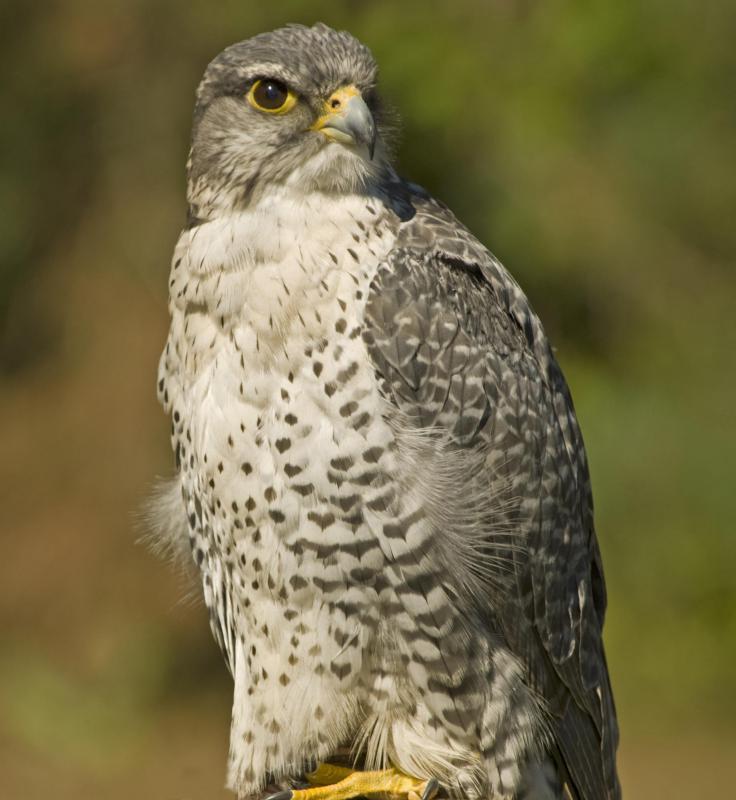At AllThingsNature, we're committed to delivering accurate, trustworthy information. Our expert-authored content is rigorously fact-checked and sourced from credible authorities. Discover how we uphold the highest standards in providing you with reliable knowledge.
What is the Wetlands Biome?
A biome is a community of flora and fauna which has adapted to particular conditions; biomes are also known as ecosystems. The wetlands biome is a biome characterized by damp conditions, leading to a diverse collection of species which enjoy this semi-aquatic environment. Examples of the wetlands biome can be found in almost every part of the world, except for regions which remain frozen year-round. Wetlands are believed to be very ecologically important because they provide shelter, food, and protection for a range of species, and they also act as buffer zones, protecting neighboring biomes from flooding and inclement weather.
The defining characteristic of a wetland is a large amount of water, either salt, fresh, or mixed. The wetlands biome typically has areas of standing water for much of the year; some wetlands are wet year round, while others run in a wet/dry cycle, in which the land experiences periodic periods of dryness. The standing water hosts aquatic plants and animals, along with transitional trees, shrubs, and animals which enjoy the food and shelter that the wetlands biome offers.

Aquatic plants like reeds and lilies are common, along with waterbirds like ducks, geese, swans, and herons. The wetlands biome also often hosts creatures like beavers, minks, and rats, and sometimes larger animals such as deer and moose will venture into wetlands for food and shelter. Trees like cypress and mangrove can also be found in the wetlands biome, along with shrubs such as cranberries. Studies of wetlands seem to indicate that they are among the most diverse places on Earth.

Marshes, bogs, and swamps are all considered wetlands. Swamps can run the gamut from the heavily forested mangrove swamps found along the shoreline in many nations to freshwater swamps in inland regions. Bogs are characterized by highly acidic conditions, created through slow decomposition of plants and animals and poor drainage. Wetlands act as large buffer zones, trapping floodwaters and rain so that drier ecosystems do not become waterlogged during storms and heavy weather.

Because wetlands straddle the divide between fully wet environments and entirely land-based ecosystems, they integrate characteristics of both ecosystems. They are also very fragile, and subject to damage through pollution, poor land management, and exploitative use of natural resources. Several conservation organizations are dedicated to the preservation of the wetlands biome around the world, and some groups also work to restore and expand existing wetlands.
Frequently Asked Questions
What defines a wetlands biome?

A wetlands biome is characterized by its water-saturated soil, which supports aquatic plants and a diverse array of wildlife. This ecosystem is a transitional zone between terrestrial and aquatic environments, often featuring marshes, swamps, and bogs. Wetlands play a crucial role in water purification, flood control, and as breeding grounds for many species.
Why are wetlands important to the environment?

Wetlands are vital for maintaining biodiversity, providing habitat for numerous species, including endangered ones. They act as natural water filters, trapping pollutants and sediments, and help in carbon sequestration, mitigating climate change. According to the Environmental Protection Agency, wetlands can store 1-1.5 times more carbon than rainforests per area.
What types of animals live in the wetlands biome?

The wetlands biome is home to a rich variety of animals, including amphibians like frogs and salamanders, reptiles such as alligators and turtles, numerous bird species like herons and ducks, as well as mammals like beavers and otters. Many fish and invertebrate species also thrive in wetland waters.
How do wetlands help in flood control?
Wetlands act as natural sponges, absorbing and storing excess rainfall and reducing the severity of floods. By slowing down water flow, they allow for groundwater recharge and maintain stream flow during dry periods. The U.S. Geological Survey notes that one acre of wetland can store up to 1-1.5 million gallons of floodwater.
Are wetlands endangered?

Yes, wetlands are among the most threatened ecosystems globally. Human activities such as land development, pollution, and drainage for agriculture have led to significant wetland loss. The Ramsar Convention reports that wetlands are disappearing three times faster than forests, emphasizing the urgent need for conservation efforts.
How can we protect wetlands?
Protecting wetlands involves legal regulations to prevent pollution and overdevelopment, restoration projects to recover degraded wetlands, and sustainable management practices. Public education on the importance of wetlands and community involvement in conservation are also key. International agreements like the Ramsar Convention work towards global wetland protection and wise use.
AS FEATURED ON:
AS FEATURED ON:

















Discussion Comments
Biomes of the world are so important, especially wetlands. They do much more for us than we can imagine. Wetlands protect from floods, serve as a buffer from storms and tsunamis, filter and save groundwater and prevent landslides. And these are not even all of their functions.
If you were to mark wetlands biome on the map, you would be surprised to know that they exist in the most unexpected places like Russia, Sudan and Bangladesh. And they are not the scary places that our childhood thrillers depicted them to be -- they are some of the most beautiful places on earth, varying in size and habitation. Some are over one hundred thousand square kilometers! Many of them are actually used for recreational purposes and parks.
Because of how fragile their environments are, wetlands biome animals are among the more commonly endangered types. Luckily, wetlands conservation efforts in general have become more active in recent years, and the problems are, in some places at least, becoming less common.
Post your comments